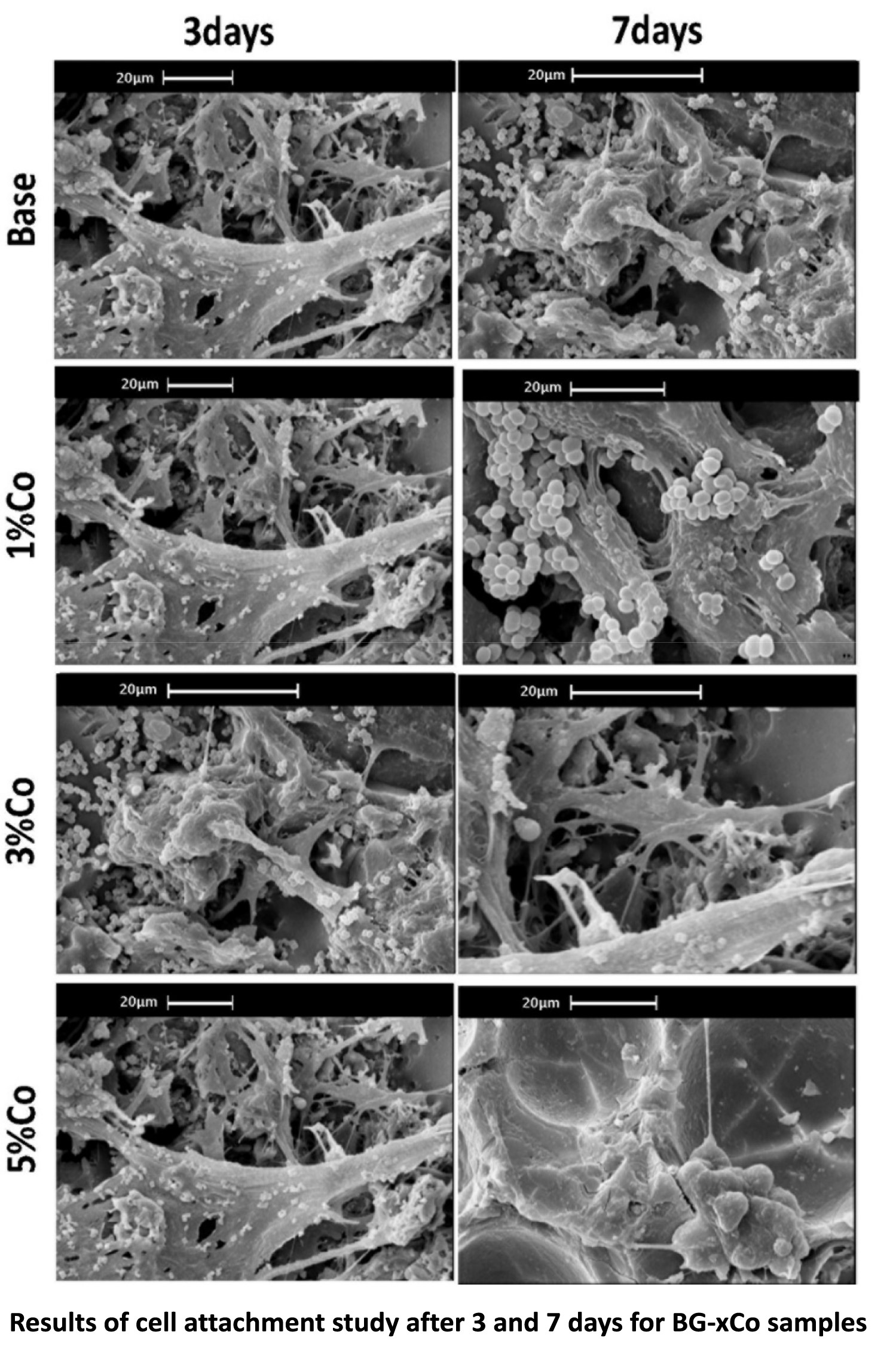Sat, Jun 7, 2025
[Archive]
Volume 21, Issue 2 (June 2024)
IJMSE 2024, 21(2): 1-23 |
Back to browse issues page
Download citation:
BibTeX | RIS | EndNote | Medlars | ProCite | Reference Manager | RefWorks
Send citation to:



BibTeX | RIS | EndNote | Medlars | ProCite | Reference Manager | RefWorks
Send citation to:
Saeidi A, Banijamali S, Heydari M. Cobalt Doped Bioactive Glasses: Sinterabilty, Crystallization Trend, and Bioderadation Assessment of Relevant Glass-Ceramic Scaffolds. IJMSE 2024; 21 (2) :1-23
URL: http://ijmse.iust.ac.ir/article-1-3592-en.html
URL: http://ijmse.iust.ac.ir/article-1-3592-en.html
Abstract: (9873 Views)
This study explores the fabrication, structural analysis, and cytocompatibility of cobalt-doped bioactive glass scaffolds for potential applications in bone tissue engineering. A specific glass composition modified from Hench's original formulation was melted, quenched, and ground to an average particle size of 10 μm. The resulting amorphous powder underwent controlled sintering to form green bodies and was extensively characterized using simultaneous differential thermal analysis (DTA), Raman spectroscopy, and Fourier Transform Infrared analysis (FTIR). After mixing with a resin and a dispersant, the composite was used in digital light processing (DLP) 3D printing to construct scaffolds with interconnected macropores. Thermal post-treatment of 3D printed scaffolds, including debinding (Removing the binder that used for shaping) and sintering, was optimized based on thermogravimetric analysis (TG) and the microstructure was examined using FE-SEM and XRD. In vitro bioactivity was assessed by immersion in simulated body fluid (SBF), while cytocompatibility with MC3T3 cells was evaluated through SEM following a series of ethanol dehydrations. The study validates the fabrication of bioactive glass scaffolds with recognized structural and morphological properties, establishing the effects of cobalt doping on glass behavior and its implications for tissue engineering scaffolds. Results show, Low cobalt levels modify the glass network and reduce its Tg to 529 oC, while higher concentrations enhance the structure in point of its connectivity. XRD results shows all prepared glasses are amorphous nature, and DTA suggests a concentration-dependent Tg relationship. Spectroscopy indicates potential Si-O-Co bonding and effects on SiO2 polymerization. Cobalt's nucleating role promotes crystalline phases, enhancing bioactivity seen in rapid CHA layer formation in SBF, advancing the prospects for bone tissue engineering materials.
Type of Study: Research Paper |
Send email to the article author
| Rights and permissions | |
 |
This work is licensed under a Creative Commons Attribution-NonCommercial 4.0 International License. |








